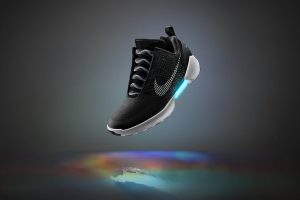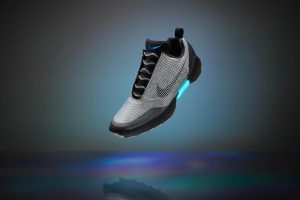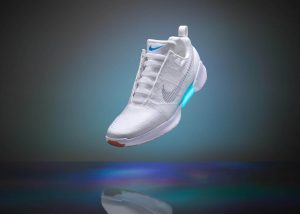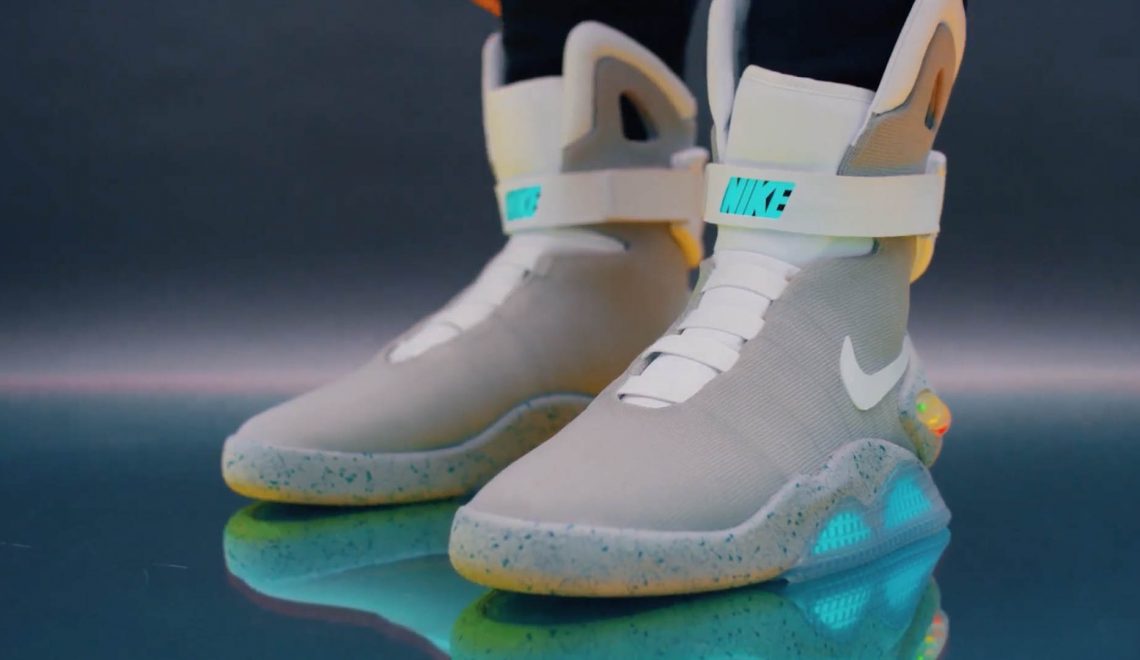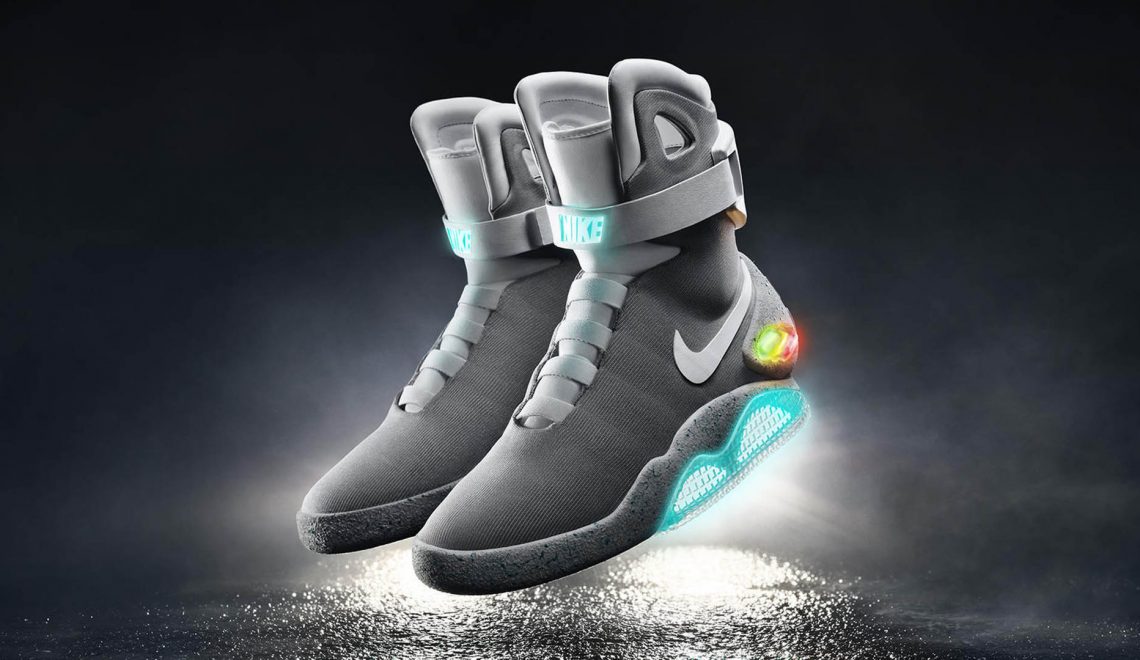If you weren’t lucky enough to win one of Nike’s functional reproductions of the self-lacing Mag sneaker from Back To The Future, don’t fret; something arguably more exciting is launching this week. Sure, the Mags were amazing from a retro-cool perspective, but on December 1st Nike is launching the first mass produced self-lacing sneaker. Named HyperAdapt 1.0, the sneakers represent the future of where the footwear giant believes their industry is headed.
While the easiest way to describe the HyperAdapt 1.0 is “self lacing,” Nike isn’t a big fan of the term and favors referring to the tech as “adaptive fit.” That likely comes from the fact that the HyperAdapt is a direct descendant of the Mag. When the Mag was original created for Back To The Future 2, the designers at Nike wanted to create a futuristic vision of a better athletic sneaker, something that would come alive and sense you, adjusting to the shape of your foot. In other words, adapt to you. After the release of Back To The Future 2, there was a huge outpouring by fans for Nike to create an actual Mag and bring it to market. As the years passed, the requests kept coming in and at a certain point teams within Nike started to brainstorm whether such technology could actually be created and designed to fit within a shoe. After nearly three decades of discussions and 11 years of R&D, the HyperAdapt 1.0 became a reality. The shoes are truly the Nike Mag reimagined for today.
So what exactly is the HyperAdapt 1.0? Well it is a sneaker equipped with a sensor, motor, rechargeable battery, and cable system that all work together to automatically fit the shoe based on a pressure algorithm. Simply insert your foot into the sneaker and the laces automatically tighten. Recognizing that some people like a snugger or looser fit, there are a pair of buttons near the tongue that allow you to adjust the tightness of the laces. Showcasing a synergy of technologies, one of the things that makes the HyperAdapt possible is the separate development within Nike of the 3-D knitted Flyweave upper. The cables used to self-lace the HyperAdapt 1.0 are actually embedded into the shoe’s nylon Flyweave upper.
It all sounds pretty exciting! Who wouldn’t want to get their feet into a pair? Unfortunately, Nike is not making it easy (or cheap) for the time being. Here is a list of everything you need to know about the HyperAdapt 1.0 as it launches December 1st.
- The HyperAdapt 1.0 retails for $720
- It is available in NYC beginning December 1st and reservations can be made via the Nike+ app
- Wider availability will occur in mid-December
- The shoes must be purchased at a Nike store and include a 1-on-1 consultation on how they work
- There are 3 colorways available: Black (Dec. 1), Grey (mid-December), and White (mid-December)
- The LEDs in the sole and on the heel stay lit of approximately 6 seconds during lacing and indicate battery state
- A 3 hour charge lasts for approximately 2 weeks
- The sneakers can be recharged via a pair of magnetic chargers that attach to the sole of the shoes
- The E.A.R.L. on the tongue stands for “Electro Adapative Reactive Lacing”
As cool as the adaptive fit technology seems, there are a number of detractors both within Nike and throughout the industry. Their sentiment thatthe technology is a gimmick, something designed to sell shoes but that doesn’t add any real world meaning – often compared to Reebok’s “Pump” sneakers. The supporters of the HyperAdapt are adamant that the technology is more than just a parlor trick. Nike has spent a “considerable” amount on the R&D of these shoes because leadership believes it is the future of the industry. While the 1.0 version of HyperAdapt might simply be a self lacing sneaker (which, by the way, is far from a gimmick; it is an incredible development for people with disabilities), future iterations of the footwear are already in development that promise to provide true performance benefits. For example, Nike is developing an adaptive fit running shoe that will adjust its fit as your feet swell during long distance running and is exploring materials that would allow the upper to adjust breathability as needed or the sole to become more or less cushioning.


